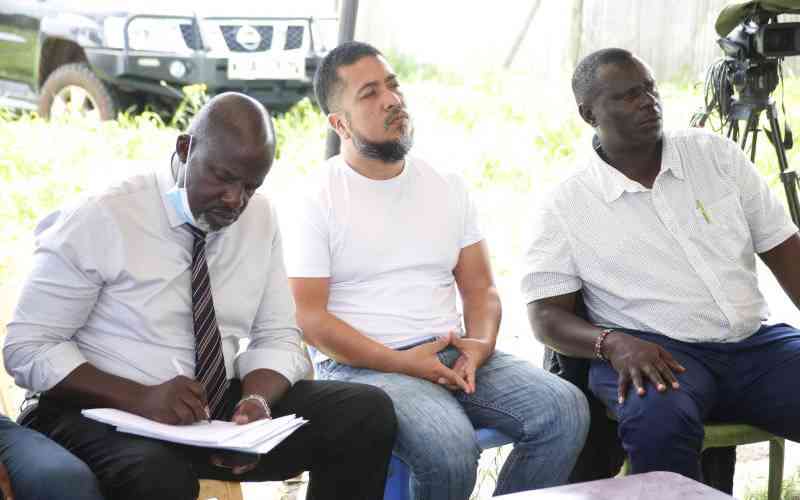Last week on Thursday, I was glued to the screen of my computer streaming live, the announcement of the Nobel Prize for Literature and press conference thereafter.
Understandably, I was rooting for Ngugi wa Thiong’o who is my author and of course, Kenyan.
At exactly 1pm, Prof Sara Danius, Permanent Secretary of the Swedish Academy walked through the golden doors and without much ado, pierced my balloon of hope by announcing Belarusian, Svetlana Alexievich, the winner of this year’s prize. Well done, I muttered and promptly closed the window – talk of wounded national pride.
There was something odd about the whole set up though − Svetlana Alexievich had not written any fiction – actually, she is a journalist. Indeed, freelance journalist Sven Hugo Persson asked Prof Danius about it and she explained that Svetlana’s work, though not fiction, really stood out.
This is when I remembered Mary Rokonadravu - the Fijian winner of a regional heat for the Commonwealth Short Story Prize. Mary and Svetlana had one thing in common; they both won prizes by writing non-fiction. Mary’s story was a biography while Svetlana’s was journalistic reporting. Good non-fiction is being read and running off the shelves! Sevtlana’s book sold over two million copies.
Non-fiction is prose writing about real people, facts and events. For instance, if Mohammed Ali’s Jicho Pevu was scripted – written − then it would be non-fiction. In fact, I would urge Ali to script it. The same would go for KTN’s Case Files.
Svetlana wrote about the women who were at the frontline during the Second World War and “about conscripts and their mothers in the Soviet-Afghan war; about men and women who committed suicide, or attempted to, when the Soviet Union collapsed; and about everyone who was consumed by the Chernobyl nuclear catastrophe and its cover-up”.
This was unknown history, as Prof Danius put it. Sevtlana interviewed individuals and through her writing made the world encounter a history of emotions of specific souls. This is what won her the Nobel Prize for Literature. You too can do this!
As Prof Danius observed, this seems to be a new genre of literature, which Sevtlana calls ‘novels in voices’. Anyone who has watched Jicho Pevu or Case Files will agree that the journalists do their homework – Sevtlana spent years researching − and when we encounter the stories, we can’t help but identify with them. The question then that begs is, how can you write good non-fiction?
Without doubt, you must have a story. Then you should find a way of saying what you want differently. The reason for this is that non-fiction has been done for quite a while and you would not want to repeat what others have done – copycats never go far. The next thing is that you must write in a cinematic way. Imagine you are a camera; you will see what is close, and what is far by zooming in. The other thing is that you will see detail that others may not see – bring these out, surprise those who are seeing with the naked eye with these details. Further, ensure your words create pictures in your reader’s mind. Let your reader ‘see’ in their mind, what you are saying.
Importantly, write something that the world needs to hear about. It would be foolhardy for you to write say about yourself and yet no one knows you. Writing what people want to hear means you are solving a problem or meeting a need.
For instance, people would like to hear about the girls that suffer at the hands of their masters in the Arab world where they go work as house-helps only to be enslaved. Moreover, isn’t incredible that even after many have been thrown off balconies many more go there? There is a big story here. All it requires is proper research − interviews, starting from the returnees and those who are on their way out.
Finally, you must employ the elements of the novel: scene, setting, characters, dialogue and drama. This is what will ensure that your work flows and is interesting. As you zoom in, you should describe the scene very well.
However, you cannot have a scene without setting. The reader will want to know where the events are taking place. The characters that you involve in your non-fiction must also be alive. You must give details and write their dialogue well so that nobody doubts you. Naturally, life is full of drama and like any other writing, ensure yours is top-drawer. You never know you might be our Svetlana and bring the elusive Nobel Prize for Literature home.
Stay informed. Subscribe to our newsletter
 The Standard Group Plc is a
multi-media organization with investments in media platforms spanning newspaper
print operations, television, radio broadcasting, digital and online services. The
Standard Group is recognized as a leading multi-media house in Kenya with a key
influence in matters of national and international interest.
The Standard Group Plc is a
multi-media organization with investments in media platforms spanning newspaper
print operations, television, radio broadcasting, digital and online services. The
Standard Group is recognized as a leading multi-media house in Kenya with a key
influence in matters of national and international interest.
 The Standard Group Plc is a
multi-media organization with investments in media platforms spanning newspaper
print operations, television, radio broadcasting, digital and online services. The
Standard Group is recognized as a leading multi-media house in Kenya with a key
influence in matters of national and international interest.
The Standard Group Plc is a
multi-media organization with investments in media platforms spanning newspaper
print operations, television, radio broadcasting, digital and online services. The
Standard Group is recognized as a leading multi-media house in Kenya with a key
influence in matters of national and international interest.






